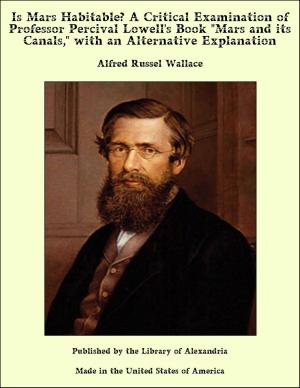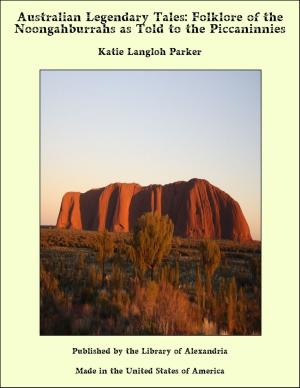The Pocket Gophers (Genus Thomomys) of Utah, Vol. 1 No. 1, Kansas University Publications
Nonfiction, Religion & Spirituality, New Age, History, Fiction & Literature| Author: | Stephen D. Durrant | ISBN: | 9781465522375 |
| Publisher: | Library of Alexandria | Publication: | March 8, 2015 |
| Imprint: | Language: | English |
| Author: | Stephen D. Durrant |
| ISBN: | 9781465522375 |
| Publisher: | Library of Alexandria |
| Publication: | March 8, 2015 |
| Imprint: | |
| Language: | English |
The history of pocket gophers of Utah begins with J. A. Allen's mention in 1874 of mounds of these animals. For them he employed the name "Thomomys rufescens?" (1874:65). Actual specimens were reported upon a year later by Elliot Coues (1875:251, 256), who used the name Thomomys talpoides for specimens from "Utah" but later in the same paper listed specimens from Provo as Thomomys talpoides bulbivorus. Even as the great variation in Utah pocket gophers has been perplexing to modern workers, so it was also to Coues seventy years ago who left the problem with the statement that animals from Provo "exhibit among themselves such variations that their labelling becomes a matter of indifference"! In the same year in another report, Coues and Yarrow (1875:112) used the name Thomomys talpoides umbrinus for animals from Provo. In 1877, Coues again referred these same animals to Thomomys talpoides bulbivorus, using the name umbrinus for the animals of only southern Utah (Coues, 1877:627, 628). The two names Thomomys bottae and Thomomys talpoides, now applicable to gophers in Utah, were synonomized under the name Thomomys talpoides bulbivorus by Coues (1875:256; 1877:627). After this beginning only three Other papers, all by J. A. Allen, appeared in the next twenty years. They were reports on collections of mammals made by Walter W. Granger and Charles P. Rowley. One of these contained the description of Thomomys aureus. Likewise, in the ensuing twenty years there were only three papers, one in 1901 by C. Hart Merriam in which he described Thomomys uinta, one by Allen (1905:119), and Vernon Bailey's (1915) "Revision of the pocket gophers of the genus Thomomys" in which he summarized the information then available on these animals within the state. Barnes (1922 and 1927) reprinted the information summarized by Bailey. Since 1927 approximately twenty-five papers, mostly taxonomic, have been published in which reference is made to Utah gophers, and especially since 1930 much information has been accumulated about the distribution and speciation of this genus within the state. Specimens to the number of 1,045 have been available for this study. Whereas Bailey (loc. cit.) listed only four kinds belonging to four different species, thirty-five kinds are now known from Utah. Seven of these are herein described as new. The thirty-five kinds are found to belong to only two instead of four full species. Inasmuch as the literature is scattered and since names have been applied in different ways at different times, I have attempted to give a synonomy as complete as possible for each form found within the state. The bibliographies of Hayward (1936 and 1941) and Miller's (1924) "List of North American mammals" have been of great use
The history of pocket gophers of Utah begins with J. A. Allen's mention in 1874 of mounds of these animals. For them he employed the name "Thomomys rufescens?" (1874:65). Actual specimens were reported upon a year later by Elliot Coues (1875:251, 256), who used the name Thomomys talpoides for specimens from "Utah" but later in the same paper listed specimens from Provo as Thomomys talpoides bulbivorus. Even as the great variation in Utah pocket gophers has been perplexing to modern workers, so it was also to Coues seventy years ago who left the problem with the statement that animals from Provo "exhibit among themselves such variations that their labelling becomes a matter of indifference"! In the same year in another report, Coues and Yarrow (1875:112) used the name Thomomys talpoides umbrinus for animals from Provo. In 1877, Coues again referred these same animals to Thomomys talpoides bulbivorus, using the name umbrinus for the animals of only southern Utah (Coues, 1877:627, 628). The two names Thomomys bottae and Thomomys talpoides, now applicable to gophers in Utah, were synonomized under the name Thomomys talpoides bulbivorus by Coues (1875:256; 1877:627). After this beginning only three Other papers, all by J. A. Allen, appeared in the next twenty years. They were reports on collections of mammals made by Walter W. Granger and Charles P. Rowley. One of these contained the description of Thomomys aureus. Likewise, in the ensuing twenty years there were only three papers, one in 1901 by C. Hart Merriam in which he described Thomomys uinta, one by Allen (1905:119), and Vernon Bailey's (1915) "Revision of the pocket gophers of the genus Thomomys" in which he summarized the information then available on these animals within the state. Barnes (1922 and 1927) reprinted the information summarized by Bailey. Since 1927 approximately twenty-five papers, mostly taxonomic, have been published in which reference is made to Utah gophers, and especially since 1930 much information has been accumulated about the distribution and speciation of this genus within the state. Specimens to the number of 1,045 have been available for this study. Whereas Bailey (loc. cit.) listed only four kinds belonging to four different species, thirty-five kinds are now known from Utah. Seven of these are herein described as new. The thirty-five kinds are found to belong to only two instead of four full species. Inasmuch as the literature is scattered and since names have been applied in different ways at different times, I have attempted to give a synonomy as complete as possible for each form found within the state. The bibliographies of Hayward (1936 and 1941) and Miller's (1924) "List of North American mammals" have been of great use















